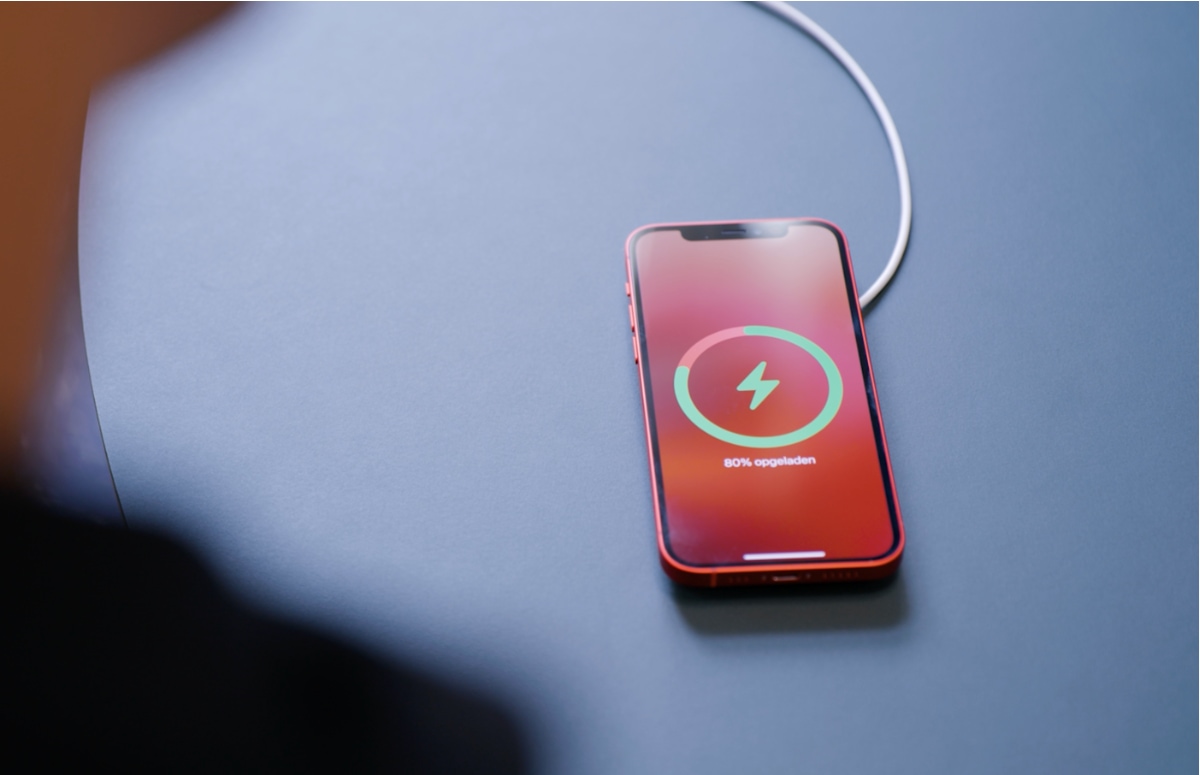Fast charging is a useful feature of the current generation of Android phones. Why doesn’t the iPhone have a fast charger yet? According to some people, using a fast charger is bad for your battery. We checked whether this is correct.
The power of fast charging
Fast chargers of 50, 80 or even 120 Watt: they have been around for years in Androidland. As a result, most high end Android phones at lightning speed. Take for example the Xiaomi 12 Pro† The battery of this device is already full after only 17 minutes of charging. The iPhone 13 Pro supports a maximum of 20 Watt fast charging and therefore needs no less than two hours to fully charge. So you can’t really call this fast.
Most iPhone users leave their devices on the charger all night, so that they wake up every morning with a full battery. Many people with an Android smartphone simply charge their phones during breakfast. As soon as the container of cottage cheese is empty, the smartphone is full. Ideal, if you ask us.

The quick charge function comes in handy when the battery breaks down in the afternoon, for example, because you have taken a lot of photos. Or when you are traveling and your smartphone is empty during your stopover in Bankok. Where iPhone users have to sit at a socket for a full two hours, many Android users walk happily away after half an hour.
If there are so many advantages to using a fast charger, why does the iPhone in 2022 still charge so very slowly? Opinions about the effect of fast charging on the life of a smartphone battery vary considerably. Some people are convinced that the battery capacity plummets when you use a fast charger. But is that actually true?
Using a fast charger doesn’t have to be bad at all
Several studies have shown that the use of a fast charger does not directly negatively affect the life of a battery – as long as manufacturers take a number of points into account. A smartphone battery is – quite simply – made up of three parts. The battery has a ‘positive’ side and a ‘negative’ side. In the middle is a liquid substance. Through this substance, lithium-ion particles move from the negative to the positive side. This provides energy.
Once all particles are on the positive side, your battery is empty. Charging brings the particles back to the negative side. This cycle repeats itself every time you charge and discharge your battery. The most important thing is that as little heat as possible is released. Heat is the biggest enemy of a smartphone battery. Large temperature differences can ensure that not all particles can switch sides. This significantly reduces the life of a battery.

Manufacturers of fast-charging smartphones should therefore limit the release of heat during charging as much as possible. That sounds difficult, because fast chargers pump large amounts of current into the battery. This is where more heat is released. Still, there are a number of clever ways to counteract this – or at least minimize it.
Split battery in half
Some manufacturers choose to cut a large battery in half, as it were. This results in two smaller batteries. If you then use a 60 Watt fast charger, the power is divided between the two batteries. Each battery then receives only 30 Watts of power. A smart way to minimize and distribute the heat that is released, without limiting the charging speed.
However, the technique also has a small disadvantage: a lower total battery capacity. This is because two batteries simply take up more space than one battery. We find that at iPhoned not a huge problem, as charging is lightning fast. Ten minutes on the charger is already enough for hours of use.

Larger Charging Blocks
Many manufacturers also opt for fast chargers with larger charging blocks. This leaves enough space for the power management to take place in the charging block – and not in the smartphone itself. This makes the charging block a lot warmer, but that doesn’t matter.
There are actually no drawbacks to this technique. Yes, the charging block looks a bit clunky and old-fashioned, but we don’t think so deal breaker† Would you like more information about fast charging? Watch the video below from tech YouTuber Marques Brownlee†
So Apple, bring on that iPhone fast charger
It is time for Apple to make a fast charger for the iPhone, that seems clear to us. In our view, the minor drawbacks do not outweigh the benefits – provided Apple implements fast charging properly. The Cupertino manufacturer is known for its eye for detail, so we don’t worry about that.
Perhaps the iPhone 14 (Pro) will finally receive support for a (really fast) fast charger. 20 Watts is simply not enough – and although we can live with it, it is time for the next step. Want to read more similar articles? Then download the iPhoned app and sign up for our newsletter. Don’t forget to follow us on facebook and Instagram†
More about Apple:
-
Why a fast charger isn’t bad for your iPhone battery (and Apple has to admit it)
-
Tip: these are the 5 best cases for your AirPods Pro
-
‘Brand new MacBook Air with 15-inch screen coming in 2023’
-
Rumor: Face ID below the screen won’t be available until the iPhone 16 in 2024
-
Budget iPad will get a larger 11-inch screen next year